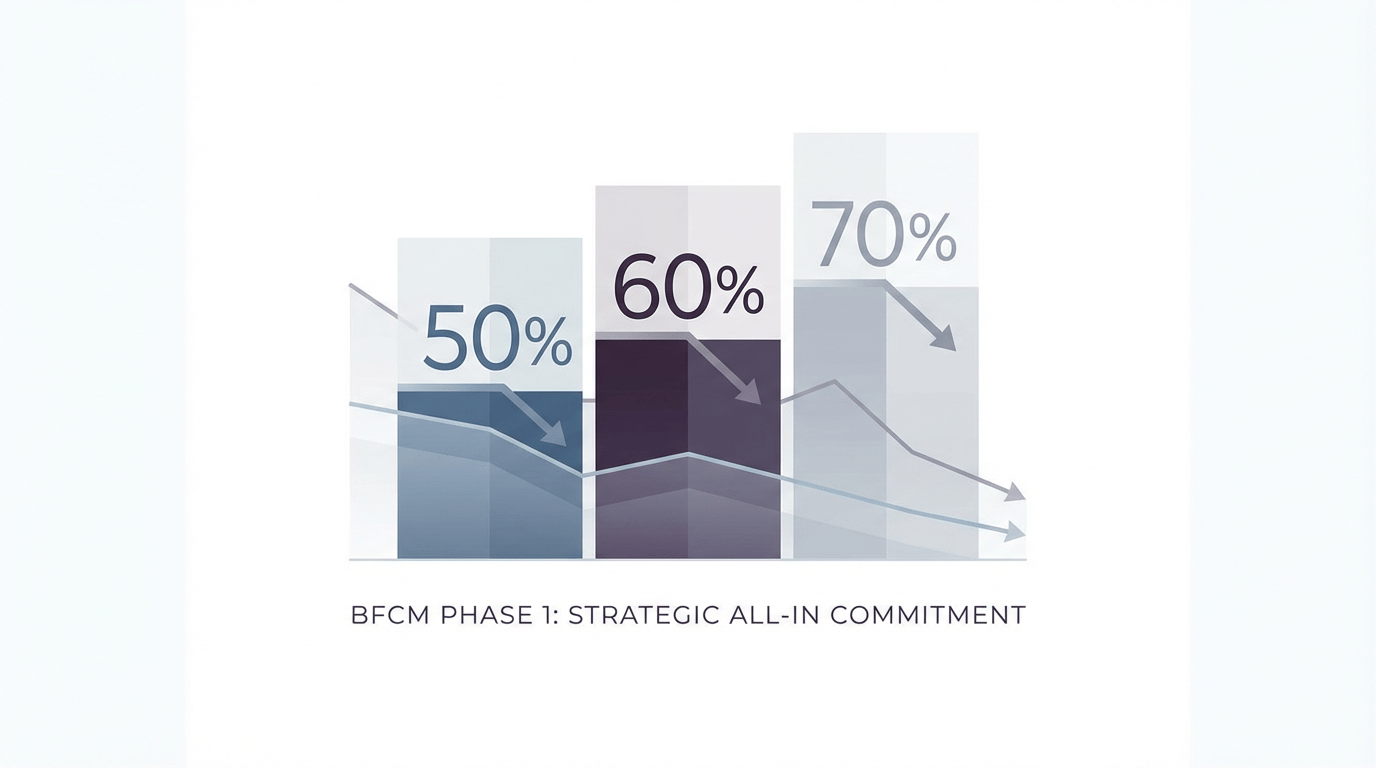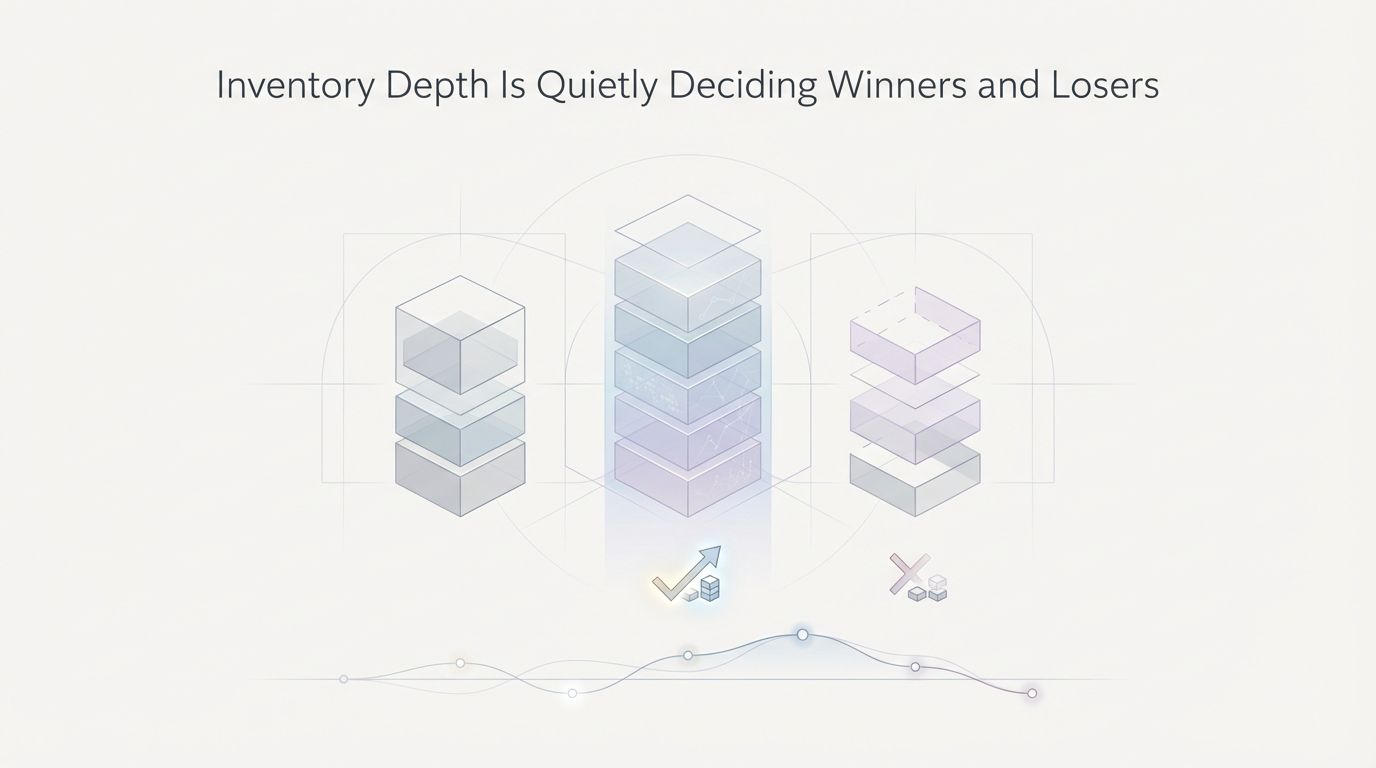- TikTok Shop Playbook
- Posts
- A Few Observations From Phase 1 of BFCM 2025
A Few Observations From Phase 1 of BFCM 2025
Black Friday / Cyber Monday (BFCM) is no longer a weekend — it’s a season. And if you’re in the TikTok Shop ecosystem, it feels less like a season and more like a multi-week campaign sprint where your preparation, product strategy, and team discipline get tested all at once.
Phase 1 of BFCM just wrapped, and before the chaos of Phase 2 kicks in, I want to share a few observations we’ve seen across the shops we manage, the sellers we talk to daily, and the broader platform dynamics this year. These aren’t theoretical — they’re the patterns we actually saw in the data and inside the trenches working with hundreds of creators and dozens of shops.
Here are the five key takeaways.
1. Bigger Bundles + Higher AOV = The Most Efficient Strategy of Phase 1
If there’s one major learning from Phase 1, it’s this:
Bundling isn’t just a margin-saving tactic — it’s a campaign-season growth strategy.
The shops that performed best weren’t necessarily the ones offering the steepest discounts.
They were the ones offering the best value per order.
Here’s why:
Higher AOV = More Room for Discounts
Campaign seasons like BFCM always push margins to the edge. The sellers who built bundles early were able to:
Absorb fees from platform promos
Support higher affiliate payouts
Offer steeper discounts without killing profitability
A single product discounted 40–50% is painful.
A thoughtfully bundled $60–90 AOV product discounted 40% is still profitable.
This is the advantage brands like Goli, Feastables, and Magic Spoon lean into every year:
Bundles give you pricing power.
Bundles Also Increase Repeat Buyers
Once someone buys a bundle during BFCM, the likelihood they return in December or January skyrockets. The product stays in their home longer. They consume it longer. They become more familiar with your brand.
In Phase 1, shops with bundles had:
Higher conversion rates
Higher GMV per creator
Higher repeat purchase rates from last year’s buyers
This is now a clear pattern year over year:
Bundles are the backbone of BFCM performance.

2. Some Sellers Already Went All-In on Phase 1 Discounts
This year, we saw something new:
Many sellers jumped straight into 50% off and aggressive Phase 1 pricing.
On one hand, this created a massive spike in attention and traffic.
On the other hand, it also accelerated the “campaign fatigue” curve.
Pros of Early Aggressive Promos
Algorithmic momentum picks up faster
Creators start posting earlier
Buyers trust the discount (it’s actually meaningful)
Competition gets filtered early — weaker shops drop out
Cons
You condition your audience for deeper discounts later
Your margin window shrinks for Phase 2
You cannibalize early-month organic sales
You risk "promo burnout" too early in the season
For many shops, this wasn’t intentional — it was reactive.
They followed what others were doing instead of having a clear promo strategy.
If you’re planning for next year, here’s the lesson:
You don’t need to start with 50% off. But if you do, everything else needs to be built around that decision — your AOV, your bundles, your inventory, and your creator strategy.
3. Live Shopping Is the Best Momentum Booster This Time of Year
If there’s one channel that surprised people (again), it’s live shopping.
The algorithm rewards any activity that drives session time and conversions — and nothing does that better than live content during BFCM.
This year, sellers who did consistent lives during Phase 1 saw:
Higher performance scores
Better placement in For You feeds
More creators picking them up organically
Faster conversion cycles (live converts cold audiences fast)
Live is no longer optional.
Live is your momentum engine.
And the biggest takeaway from this year is simple:
You don’t need 100+ creators going live. You just need the right 3–5 creators who can consistently drive energy during campaign hours.
The shops with 1–2 great live hosts dramatically outperformed shops with 20 mediocre ones.

4. Inventory Depth Is Quietly Deciding Winners and Losers
You can’t grow in BFCM if you can’t stay in stock.
This isn’t just common sense — Phase 1 made it painfully clear.
More sellers ran into stockouts this year than ever before because they started prepping in October.
By the time Phase 1 hit:
Many top SKUs were already low
New bundles couldn’t be launched
Target plans stalled
Affiliate momentum died
Lives had nothing to push
And when the algorithm sees you constantly out of stock, you lose campaign momentum and score.
This year, the sellers with the most inventory depth captured the most incremental GMV — even if their pricing wasn’t the most aggressive.
If you want to win 2026 BFCM, the preparation starts in August.
5. GMV Max Needs Massive Content Volume to Optimize
One of the most misunderstood parts of BFCM this year is how GMV Max actually scales.
Everyone thinks you just turn it on and instantly get results.
But during campaign season — when traffic, competition, and CPMs are at their peak — GMV Max becomes a pure content engine. It needs volume to learn.
And by volume, I don’t mean 30–50 videos.
I mean 5,000 to 10,000 videos circulating on the platform.
That’s the only way the algorithm can:
Test enough hooks
Find new audiences
Identify high-converting creators
Build winning content clusters
Push your SKU into campaign momentum
GMV Max is a content-driven machine. The more it eats, the smarter it gets.
This is why Phase 1 separated the prepared shops from the unprepared ones:
Sellers who seeded hundreds of creators 2-3 months in advance saw thousands of videos go live during Phase 1.
That content fed GMV Max enough signals to optimize quickly.
Those shops saw faster scaling, lower cost per conversion, and stronger GMV per dollar spent.
Final Thoughts
Phase 1 of BFCM 2025 showed us one big truth:
There is no single tactic that “wins” BFCM.
It’s the coordination — bundles, promos, lives, creators, inventory, GMV Max, and clear planning — that builds compounding momentum.
The brands that viewed Phase 1 as a testing ground, not a finish line, are now positioned to dominate in Phase 2 and Phase 3.
If you want to win BFCM, the lesson from Phase 1 is simple:
Start earlier, plan deeper, and build momentum instead of chasing it.